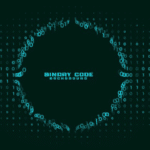
Data visualization encompasses a variety of features that makes the visualization process successful. An alluvial plot and a Sankey diagram are vital elements of data visualization that play a crucial role when analyzing general flow diagrams. These features are used to depict changes in the magnitude of quantities as they flow between different sections.
However, the difference between a Sankey diagram and an alluvial plot is a total night of darkness. Many people struggle with finding the difference between the two crucial elements to no avail. It is no secret that the two elements seem to have multiple similarities, and you may end up confusing them in terms of functionality.
When you look closely at the two visualization elements, they appear to be very similar. This means you need to have a unique approach to identifying the difference between the two entities. The big question is, what is the difference between a Sankey diagram and an alluvial plot?
This article has a robust research report that spells out the significant difference between the two features to enable you to recognize when and where each future is used during data visualization. Read on for more information!
Sankey Diagram
A Sankey diagram was first introduced in 1898 by an engineer known as Mathew Henry Phineas Real Sankey. The diagram was mainly developed to showcase a steam engine’s flow of energy efficiency. The diagram utilizes several flow paths that vary in terms of sizes in order to communicate different messages simultaneously.
The flow of data is depicted by the aid of arrows and the direction of the given paths. However, you need to understand the fact that not all Sankey diagrams use arrows, although they aid in communicating the direction of a particular flow, indicating both the data input and output. The flow across the diagram can split at any point within the system.
When the arrows split, they indicate how quantities within the system are divided depending on the change of state. You can decide to use a divider line or varying colors to divide the chart into different sections that display the transition of state between one section to the next. Note that the thickness of the flow mainly showcases the value within the dataset.
Identifying such values gives you a better chance to compare and contrast various proportions of every flow path within the entire system. These features make a Sankey diagram the best alternative when you intend to communicate how an abstract system operates and the flow’s direction and magnitude.
In addition, they can be used to identify the dominant contribution within an overall flow and identify any form of inefficiencies within the system and reveal where there is wastage of resources within the system.
Alluvial Diagram
An alluvial diagram came into the limelight back in 2010, introduced by Martin Rosval and his colleague Carl T. Bergstrom. The diagram was primarily presented to showcase the change in a large and complicated network structure over time. Let’s work with an example of an alluvial diagram used to show a case of scientific fields depending on the citation patterns.
At first glance, an alluvial diagram seems confusing to read and interpret. When you look at the diagram, you will note that the blocks represent clusters of the nodes. On the other hand, the flow paths outlined between the blocks represent the changes that have occurred within a given time frame.
The high of every block within the chart is proportional to the available size of the cluster. Also, the thickness of a stream field is directly proportional to the general size of the enclosed components in the blocks and the flow path. An alluvial also utilizes different colors to represent any form of structural changes within the data.
When reading and interpreting an alluvial diagram, you must be extremely keen on how the colours flow from one point to another and the type of content they represent. Many people use an alluvial diagram to display the changes of various elements of a given time. When the alluvial diagram is used to depict changes, many people tend to get confused and label it as a Sankey diagram.
In most cases, alluvial diagrams tend to have flow paths that are often wavy and overlapping due to the nature of the data presented. Also, this kind of data is mainly used when conducting multivariate data analysis. You need to be keen on the data patterns outlined in the chart since they play a massive role in bringing out the identity of the diagram.
Comparing the Differences
After profoundly analyzing what every element comprises, you need to compare the differences between a Sankey diagram and an alluvial plot. Sankey diagrams mainly focus on identifying how quantities flow from one point in a system to the next. You can perceive a Sankey diagram as an advanced flow chart that can visualize quantitative data values.
Just like a flow chart, Sankey diagrams can incorporate cycles which is one of the major things that makes it different from an alluvial diagram. In addition, the flow paths inside a Sankey diagram can opt to combine or even split at any point within the system. This is contrary to an alluvial diagram where the flow paths move from one end to another.
When you closely look at a Sankey diagram from a visual perspective, you will realize that it only focuses on displaying the flow of things inside a system and does not display nodes on most occasions. Even though the tools used to draw a Sankey diagram usually indicate nodes, they are only meant to depict technical constraints involved in the process.
You can remove the nodes by simply exporting the image and refining it using the vector-image editing software, which helps you make any adjustments of your choice. Arrows do not have a practical use on alluvial plots since the flow can easily be identified. Sankey diagrams rely on arrows to display the flow of data.
Arrows are not used in alluvial plots because data usually flows in one direction, so there is no need to use them. When nodes are used on a Sankey diagram, they are typically placed freely compared to how they are inserted in an alluvial diagram. In most cases, the alluvial diagram is used in multi-dimensional or multivariate data analysis.
IN such circumstances, all the focus is usually channelled to the proportions and frequencies between different data dimensions and the prevailing relationship between the data dimensions. On the flip side, Sankey diagrams are used to display visual quantities between various stages across the entire visualization process.
Note that a Sankey diagram visualizes data quantity based on outgoing and incoming varying parts of a flow. This makes it easier to locate the areas where there is dominant contribution and places where the quantity is lost. The significant difference between these two elements can be recognized by evaluating the consistency of the length, the nodes and line sets.
Final Word
An alluvial plot and a Sankey diagram seem to have many similarities to the extent that people say they are the same thing. The reality is that there is a huge difference between the two visualization elements you need to learn and master to avoid confusion. This article has shared all the possible features that can enable you to mark the difference existing between the two.

Essential Trademark Registration Steps for Successful Product Importation in the UAE

A Guide to Buying Management eBooks in PDF and Essential Business Sheets

How Insulated Water Bottles Are Revolutionizing the Drinkware Industry

Pre-Requisites Before Applying for an Instant Personal Loan

Embrace the Magic of Turkey: An Unforgettable Visit

Britannia QR Code: Get An Exceptional Reward Through QR Code

Cryptonewzhub.com: Know All Details About Cryptocurrency

2023-1954: Know About Mysteries Of Time








